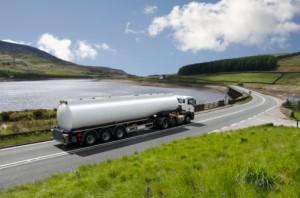When it comes to transporting oil and gas equipment, products and materials to and from drill sites, a lot has changed in recent years. Reducing costs are now becoming more of a priority. Why? The market is getting more competitive. Today, energy companies wrestle with the same transportation challenges that other industries do: a growing freight capacity crunch and driver shortage, tougher safety regulations, and rising fuel prices.

If you’re managing an oil and gas supply chain, you can’t afford to ignore the realities of an increasingly challenging transportation landscape. If you don’t get the edge by maximizing transportation efficiencies, your competitors will. And getting those efficiencies first means busting some popular myths. Let’s look at the top five… and how a dedicated transportation services model can help.
Myth 1: there’s no way around the freight capacity crunch
Truth:
The capacity crunch is real. Today’s transportation market is a trucker’s market. Carriers can pick and choose which shippers they’ll serve – and are more likely to go after higher paying and consistent freight opportunities. Securing capacity is even harder for oil and gas companies because they’re typically moving pipe, drilling equipment and supplies to and from remote locations often backhaul light and with extensive detention times.
Compounding the issue, specialized equipment such as bulk and flatbed trailers, in high demand for oil and gas companies, are in even shorter supply. The good news? With a dedicated fleet, capacity is guaranteed even for this tough-to-get equipment and driver supply.
Myth 2: the oil & gas business isn’t suited for a dedicated solution
Truth:
Although oil and gas freight traffic can be inconsistent in frequency and route day to day, the case for a dedicated solution for shorter-haul activities for suppliers, distributors and infield operations is strong.
Myth 3: driver detention times are a fact of oil & gas life
Truth:
Detention time for oil and gas drivers is inevitable. Wait time during trailer loading could take anywhere from two to seven or eight hours. One of the biggest misconceptions in the business: that’s just how it is.
Not so with a dedicated transportation model. With drop-trailer capabilities, drivers show up at the dock where a pre-loaded drop trailer is ready and waiting. By mounting tubular goods on spare trailers ahead of time, long driver detention times are a thing of the past.
Myth 4: there’s no way around high transportation costs
Truth:
The cost of transportation has traditionally been secondary to safety and service for oil and gas companies. As demand continues to outstrip capacity, those costs are rising. So how do you get around rising transportation costs?
Consider this: with a dedicated fleet, you don’t have to pay steep premiums on the spot market – costs are always stable and predicable. Instead of making one shipment per day, with advance load and route planning and consistent drivers who know the business, oil and gas companies can expect multiple turns per day. Using drop trailers extends those benefits even further.
Myth 5: safety will always be an issue
Truth:
Safety has always been a top priority in the oil and gas industry, partly because of the nature of the product and also because loading, unloading and transporting heavy tubular goods (piping) is inherently dangerous.
With a dedicated fleet, the same driver delivers loads every day. Drivers and equipment are up to required standards for oil and gas drilling sites. Drivers always have the right personal protective equipment (PPE) and vehicles are equipped with right tools to meet your securement standards, from the correct type of pipe stakes to the proper amount of straps and dunnage.
This is in contrast to for-hire carriers, where brokered drivers not focused exclusively on the oil and gas industry could show up without the proper equipment, securement standards, and expertise, creating unnecessary safety issues and delays.
The Dedicated Difference
Looking to transport equipment, products and materials to and from rig sites safely and cost-effectively? Want to bypass issues like a growing driver shortage and freight capacity crunch? One way to do so is to team up with qualified partner for a dedicated transportation solution.
By: Mike Plasencia, Director of Transportation for Ryder Dedicated. With significant experience in logistics and operations management, Mike Plasencia leads the Dedicated team at Ryder System, Inc., developing and implementing new supply chain solutions to meet the unique needs of customers across a variety of industries.

